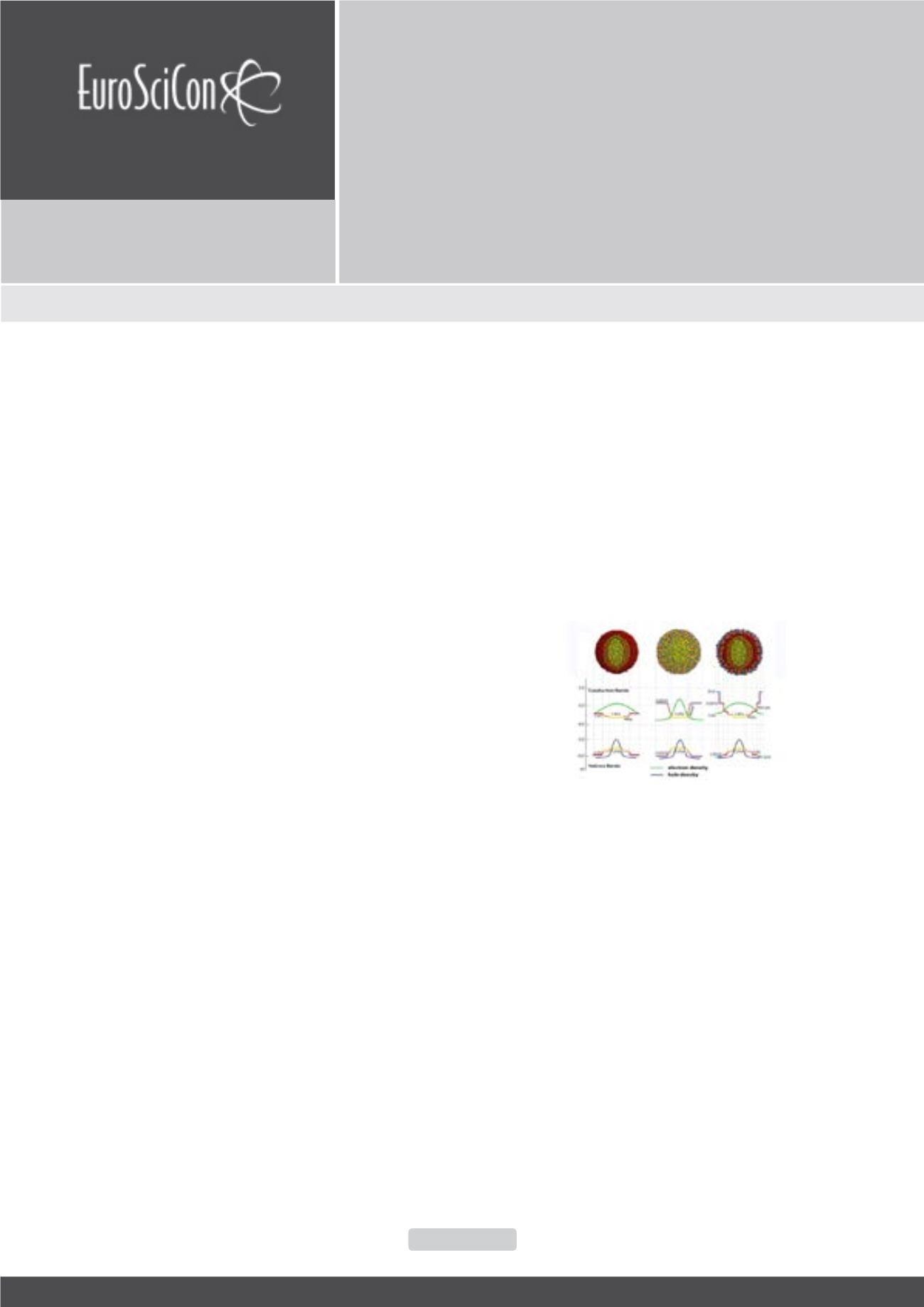

NanoMat 2018
Nano Research & Applications
ISSN: 2471-9838
Page 45
April 26-27, 2018
Rome, Italy
17
th
Edition of International Conference on
Emerging Trends in
Materials Science and
Nanotechnology
O
ne of the emerging applications exploring the potentialities
of fluorescent nanomaterials is related to light emitting
technologies. In particular for the realization of practical
light- emitting diodes and large-area displays, semiconductor
nanomaterials may overcome many issues of such challenging
technologies. A critical aspect of semiconductor nanoscaled
materials is related to the large Coulomb interaction between
electrons and holes, and their strong spatial confinement, with
respect to their bulk analogues. When the size is reduced to levels
smaller than the exciton Bohr radius, size-dependent absorption
and emission properties develop. Upon formation of excitons
within quantumdots (QDs) through optical or electrical processes,
Coulomb interactions play a key role in subsequently determining
their radiative and nonradiative decay rates, fluorescence
quantum yields, multi-exciton generation and its decay.
Appropriate engineering of QDs, through the colloidal synthesis
of core/shell heterostructures, has emerged as the most facile
manner to gain control of these Coulomb processes. The strong
electronic coupling between the core and shell in core/shell QDs,
ensures that the electronic structure, composition and thickness
of the shell must be considered in parallel with the properties
of the core in order to predictably manipulate the electron and
hole probability densities to obtain the desired optoelectronic
characteristics. This spatial control of carriers affects the direct
Coulomb interaction between electrons and holes, but also
influences the rate and carrier selectivity of trapping at surface
and, possibly interfaces defects. The latter is highly dependent
on the core/shell structure, for which lattice mismatch between
materials must be carefully managed to avoid defect formation
stemming from excessive interfacial stress. The above structural
and electronic factors define the dynamics of single and multi
excitons in QDs, which directly influences aspects such as
recombination lifetimes, luminescence efficiency and optical
gain properties. Considering the importance of each of these
properties for light emitting applications, in this presentation
we compare different approaches for the enhancement of light
emission quality in terms of high fluorescence efficiency, high
color quality, enhanced photostability under prolonged irradiation
and easy implementation of solution processablemethodologies.
All these excellent features make the use of QDs materials a
promising way for the realization of optically and electrically
pumped light emitting devices.
Recent Publications
1. Minotto A, Todescato F, Fortunati I, Signorini R,
Jasieniak J J and Bozio R (2014) Role of Core-Shell
Interfaces on Exciton Recombination in CdSe-CdxZn1-
xS Quantum Dots. The Journal of Physical Chemistry
C 118(41):24117-24126.
2. Fede C, Fortunati I,Weber W, Rossetto N, Bertasi F,
Petrelli L, Guidolin D, Signorini R, De Caro R, Albertin G
and Ferrante C (2015) Evaluation of gold nanoparticles
toxicity towards human endothelial cells under static
and flow conditions. Microvascular Research 97:147-155.
3. Vittadello L, Zaltron A, Argiolas N, Bazzan M, Rossetto
N and Signorini R (2016) Photorefractive direct
laser writing. Journal of Physics D: Applied Physics
49:125103-125111.
Semiconductor quantum dots for light emitting applications
Raffaella Signorini
1
, Francesco Todescato
1
, Ilaria Fortunati
1
, Alessandro Minot-
to
1
, Jacek J Jasieniak
2
and
Renato Bozio
1
1
INSTM - University of Padova, Italy
2
Monash University, Australia
Raffaella Signorini et al., Nano Res Appl, Volume:4
DOI: 10.21767/2471-9838-C1-008
Figure 1:
Cross-‐sectional core-‐shell structure depiction and
a schematic representation of the electronic (hole) density
distribution of CdSe-‐CdS, CdSe-‐Cd0.5Zn0.5S and CdSe-‐
CdS-‐ Cd0.5Zn0.5S-‐ZnS QDs.
















